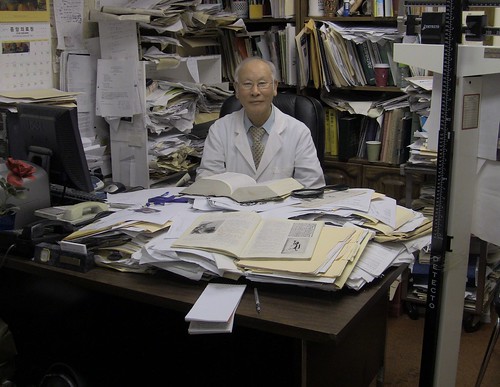Eastern medicine practices alleviate cultural and linguistic isolation for the predominantly immigrant population of Flushing in Queens, New York.
Since 2000 the US has seen a staggering 32 percent increase of Asian immigrants, according to the American Community Survey report. Asians are now the fastest growing racial group in New York City and Flushing, more specifically, holds the largest Asian community in the country outside of California.
“My parent’s don’t speak English so they go to the Oriental doctors,” said Eric Kim, 31, a second generation Korean who lives in Flushing with his family. “They are more comfortable with them. It’s about communication.”
At a local newsstand on St. Marks Place in the East Village alongside newspapers, cigarettes, maps, pens and so forth, you’ll also find traditional Korean medicinal herbs.
“Everything is more simple and [Eastern medicine] has always worked — I see Western doctors very rarely,” admitted the manager who lives in Flushing and who would only give his first name, Kong.
For practitioners of Eastern medicine the goal is to tailor a cure to match a patient’s specific needs. The emphasis is on establishing a mutual understanding between patient and doctor that differs from what critics call the Doctor knows best mantra of Western medicine.
“It’s not just medicine; it’s philosophy,” said Dr. Soo Ho Lee, 72, who has been practicing acupuncture and herbal medicine in Flushing for over 35 years. “It’s the unison of philosophy and science. There is a spiritual field too.”
That mixture is increasing attracting non-traditional converts including 2nd and 3rd generation Asians who have been raised in this country as well as non-Asian patients. Thirty percent of Lee’s practice is now non-Asian.
Often patients are cherry picking treatment from the Eastern and Western medicine cabinets depending on the ailment.
“If a child falls down, we firstly take him to an acupuncturist. If we then find out his bone is broken, we take him to a Western doctor. After that, the child goes back to the acupuncturist for pain relief and healing therapies,” explained King BH Lee, 65, who runs the Korean Wrestling Association. The Association uses Korean acupuncturists in the medical treatment of its athletes during the Olympics.
Another attraction to Eastern medicine is it is more affordable than its Western counterpart. The average cost for a session is $40 to $80 and many practices, like Dr. Jaehong Lee’s Pain Management Clinic in Flushing, accept an extensive variety of Insurance Plans. Medicinal herbs and acupuncture treat a large variety of ailments including stress, various addictions, muscular or skeletal pains, insomnia and so forth. Furthermore, both acupuncture and medicinal herbs treatments have been proven to have no side effects, unlike Western medicines.
Dr. Jaehong Lee, 50, a licensed acupuncturist at Flushing’s Pain Management Clinic came to acupuncture as a patient. Nothing seemed to help his lower back pain and seasonal allergies until he wet to an acupuncturist. “I was amazed by the effect,” he admitted. It convinced him at the age of 30 to leave his lab job in cytology to study Eastern medicine. Proof of the draw that Eastern medicine can have his practice in Flushing is 90 percent Caucasian. “Acupuncture and herbal medicines are one of the least invasive ways to help treat patients for their conditions,” he said.

